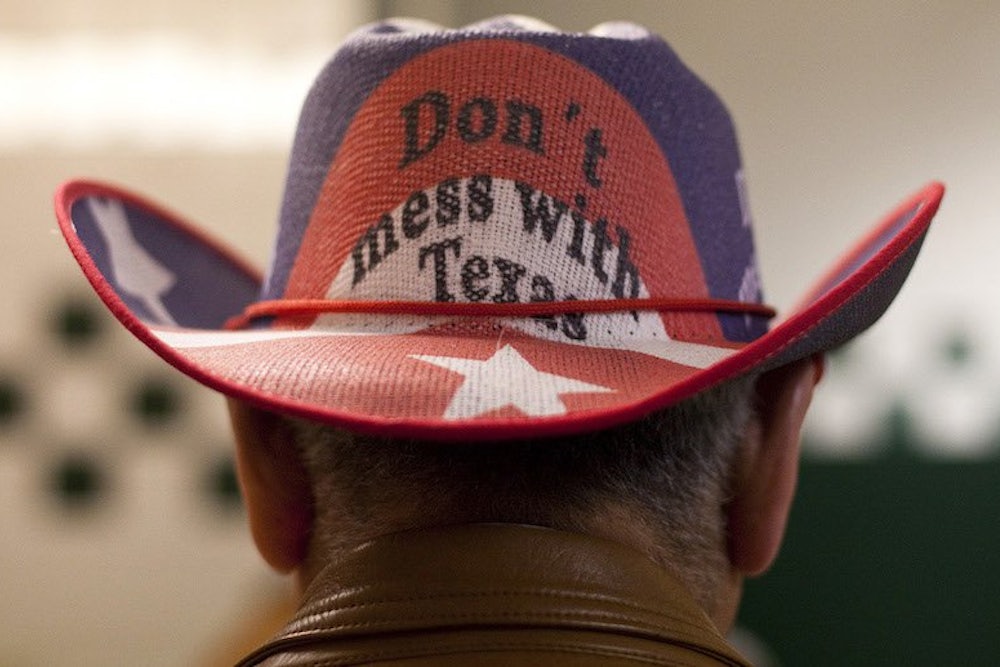Proposed legislation in Texas would allow teachers to use force, including deadly force, against students threatening the lives of others. If that unsettles you, consider the bill’s next provision: Teachers could also use deadly force to stop students from threatening school property. The bill, nicknamed the “Teacher’s Protection Act”, would create “a defense to prosecution for and civil liability of an educator who uses force or deadly force to protect the educator's person, students of the school, or property of the school, and suspension of a student who assaults an employee of a school.” Proposed by Rep. Dan Flynn, the bill is unlikely to become law—but it indicates a twisted pathology in the way we think of schools and students.
The bill is the logical conclusion of a diverse set of American pathologies, including the tendency to classify the protection of property as tantamount to the protection of life, and the use of zero tolerance policies in schools to make them precursors to prison, especially for black students. This law expresses both disturbing habits in two distinct ways.
First, by extending protected lethal force from the defense of life to the defense of school property, the law permits deadly violence in schools as a reaction to rather typical disciplinary problems. Imagine, for instance, a case of trespassing (students coming onto school property after hours) or theft of school property. In ordinary circumstances infractions like these would be regulation bad behavior, but if schools are given their own version of castle doctrine, it is unclear if these behaviors would still be viewed as ordinary rule-breaking, or something worthy of a lethal reaction.
Second, the law would rely on teachers’ judgment to distinguish between situations requiring lethal force and situations not requiring lethal force. In such situations, teachers own unconscious biases could influence their decisions in ways that disproportionately affect minority students. It's already clear, for instance, that when it comes to doling out discipline, teachers are not colorblind. A 2014 report produced by the U.S. Department of Education Office of Civil rights found evidence that black children as young as preschool aged are suspended at much higher rates than their white peers. As they move up in the school system, the report found, black students are expelled and suspended at a rate three times higher than their white peers. Moreover, while black students comprise only 16 percent of total school enrollment, they make up 27 percent of students referred to law enforcement, and 31 percent of students arrested for school-related reasons. In all grades and forms of discipline (expulsion, suspension, etc.) boys make up a greater proportion of the punished than girls.
All of this amounts to a much harsher disciplinary picture for black boys than any other students, suggesting that, if teachers were to be given leeway to use lethal force for widely expanded reasons—such as the defense of lunch tables and chalk boards—it’s likely black boys would wind up disproportionately on the losing end. Far from protecting teachers, this law would only place a population already vulnerable to harsh disciplinary measures inside school walls at further risk. Texas doesn’t exactly have a history of forward thinking when it comes to matters of human rights, but in a time when the lives of black boys seem to be ended with startling impunity by authority figures, this bill seems especially ill-considered, and especially cruel.
